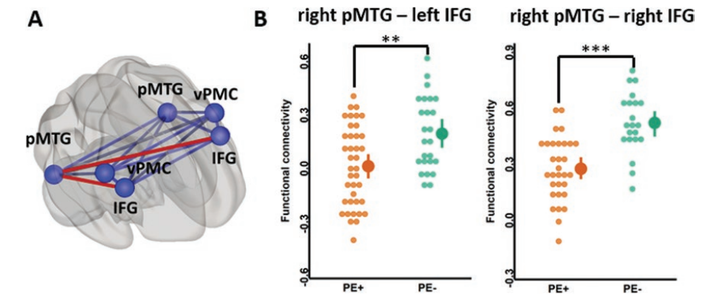Fronto-Temporal Disconnection Within the Presence Hallucination Network in Psychotic Patients With Passivity Experiences

Abstract
Psychosis, characterized by hallucinations and delusions, is a common feature of psychiatric disease, especially schizophrenia. One prominent theory posits that psychosis is driven by abnormal sensorimotor predictions leading to the misattribution of self-related events. This misattribution has been linked to passivity experiences (PE), such as loss of agency and, more recently, to presence hallucinations (PH), defined as the conscious experience of the presence of an alien agent while no person is actually present. PH has been observed in schizophrenia, Parkinson’s disease, and neurological patients with brain lesions and, recently, the brain mechanisms of PH (PH-network) have been determined comprising bilateral posterior middle temporal gyrus (pMTG), inferior frontal gyrus (IFG), and ventral premotor cortex (vPMC). Given that the experience of an alien agent is a common feature of PE, we here analyzed the functional connectivity within the PH-network in psychotic patients with (N = 39) vs without PE (N = 26). We observed reduced fronto-temporal functional connectivity in patients with PE compared to patients without PE between the right pMTG and the right and left IFG of the PH-network. Moreover, when seeding from these altered regions, we observed specific alterations with brain regions commonly linked to auditory-verbal hallucinations (such as Heschl’s gyrus). The present connectivity findings within the PH-network extend the disconnection hypothesis for hallucinations to the specific case of PH and associates the PH-network with key brain regions for frequent psychotic symptoms such as auditory-verbal hallucinations, showing that PH are relevant to the study of the brain mechanisms of psychosis and PE.